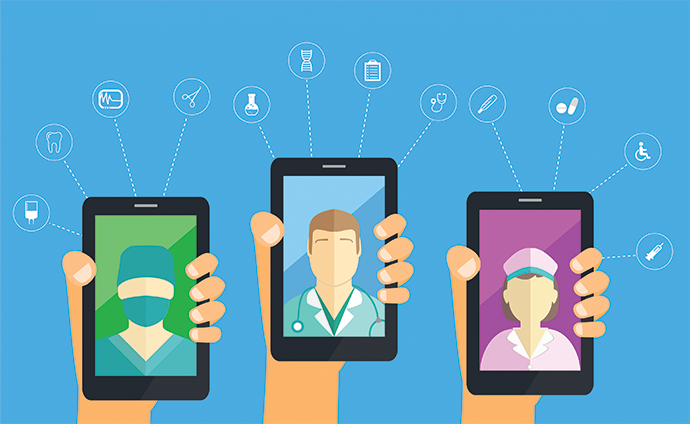Expanding the mHealth Platform to Address More Than Just Healthcare
Pushed by the COVID-19 crisis, health plans like New York's Healthfirst are beefing up their telehealth and mHealth platforms to address a wide variety of member needs - including food.

Source: ThinkStock
- With the coronavirus pandemic putting the squeeze on underserved populations, health plans are developing mHealth and telehealth tools that go beyond healthcare.
Healthfirst, a provider-owned insurer based in New York, recently launched an mHealth app that connects its 1.5 million members not only to telehealth services, but medication management tools and information on resources such as housing, education and food assistance.
GT Sweeney, Healthfirst’s chief information officer, says COVID-19 has severely impacted the health plan’s member base – two-thirds of which are on Medicaid or Medicare. And while on-demand access to healthcare is a necessity, a lack of access to other resources ultimately affects healthcare. Addressing one concern but not the others does little help.
“Being owned by the collected hospitals of New York, it’s explicit that our job is to keep people out of the hospital,” he says. But that means a lot more than just giving them access to telehealth services through Teladoc Health. “With digital strategies, we can get in front of them and help them.”
"Now more than ever, due to the health and economic impacts of COVID-19, Healthfirst had an increased urgency to provide our members with a tool that gave them easy access to the care and resources they needed to stay healthy and live a healthier life,” Sweeney noted in the press release announcing the new app.
So while adding the Teladoc Health connection to the mHealth platform – and highlighting it in the midst of the pandemic – was an important feature of the new app, Sweeney says this platform had to address other issues that affect member health.
Including food.
“Our members are on the low end of the socio-economic spectrum, and the crisis around food was intense,” he notes. “That was the most pronounced and exacerbated cohort.”
With the pandemic shutting down or limiting access to food distribution centers like markets and pantries, they needed help simply finding food to eat. So Healthfirst included details on more than 450 food resources in the area – the health plan covers residents of New York City and Long Island as well as Westchester, Sullivan and Orange counties – as well as pop-up distribution sites.
The more inclusive mHealth app is just one of several tools in the connected health toolkit that care providers and payers are using as they shift from fee-for-service care to a value-based strategy that place more of an emphasis on care management and health and wellness. They’re finding that these so-called social determinants of health – outside forces that affect health, like exercise, nutrition, home environment, economic issues and family – can be addressed alongside healthcare, especially through telehealth and mHealth channels.
“Healthcare is going to be disrupted by digital technologies,” says Sweeney, who notes the app was in production long before COVID-19 to replace a 15-year-old mHealth platform but was rushed into service to help members struggling with the pandemic. “Everything we’re doing now is defined by research and human-centered design. This is what (members) want and need.”
“For us, this reinforces the idea of agility,” he adds. “With digital health we can address these issues quickly and share information in more modern ways.”
Another example, Sweeney says, is a resource for member living with asthma. The personalized platform uses bots and targeted text messages to contact members whose medication has recently expired and directs them to renew their prescriptions.
“We’re engaging with our members to help prepare them better,” he says. “This is how healthcare is being delivered now, and how it will be done from now on.”
Sweeney says he’s “got a very long backlog of features” that he wants to add to the platform over time, including versions for Android phones and members who speak Spanish or Mandarin Chinese. He also sees more opportunities for population health programs, and more channels that allow members to connect with their own primary care providers for ongoing care management and coordination.
“I still want more velocity,” he says. “I want more seamless integration with the delivery system, so that we can improve the consumer experience.”
